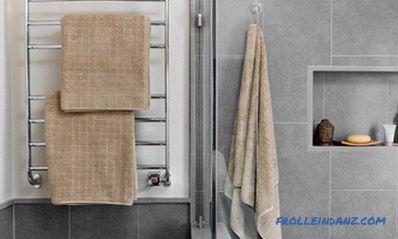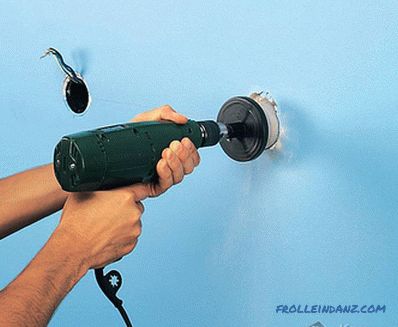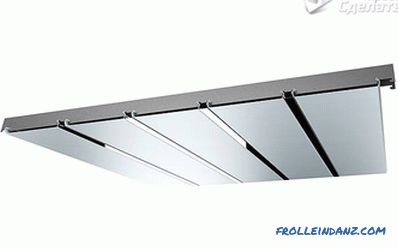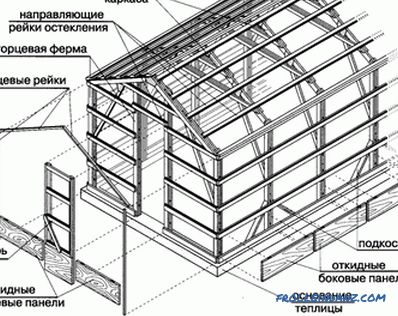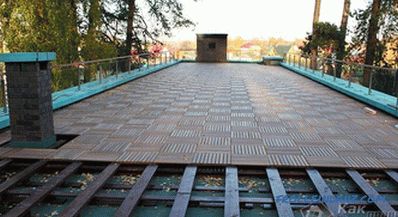When the bath is installed in its place, it is necessary to perform the last stage of work, after which you can put it into operation. An important step is to connect the bath to the sewer and water supply. In this article you will learn how to connect the bath to the sewage with your own hands.
Preparatory work
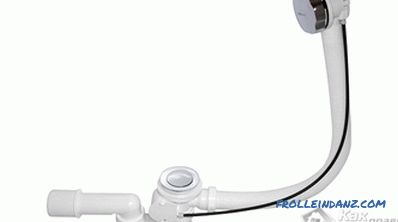 Bath siphon with overflow
Bath siphon with overflow
First of all, perform a series of preparatory work. Also consider what material you will use to connect the bath to the sewer. Bath is recommended to connect only with the use of a siphon. It has a special system and components that allow you to connect into one whole hole overflow and drain. It is not recommended to use only corrugated pipes. Why?
- the corrugated hose is poorly cleaned of possible contaminants;
- they are quickly filled with various kinds of pollution.
Before the direct connection, it is important to achieve the appropriate height difference between the connection point and the drain pipe. The siphon outlet must be high enough to ensure good water outflow.
It is equally important to ensure free access to the already installed siphon. From time to time it will need to be cleaned from internal contamination. If he is in an inaccessible place, it will be difficult to do this work.
Which pipes to use?
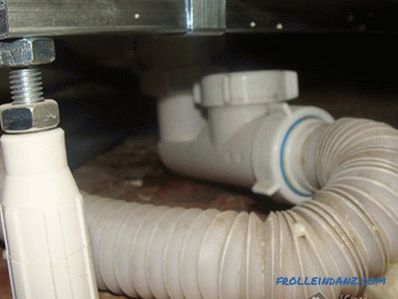 Corrugated pipe
Corrugated pipe
To connect the bath to the sewer You can use a flexible / rigid smooth plastic pipe. If the option with a rigid pipe is chosen, then additionally you will need to use 2 or 3 bends. If this is not possible, use a flexible pipe. When choosing pipes for connecting the bath, there are several factors to consider:
If your sewage system is made of plastic pipes, then the siphon can be connected using a flexible pipe Ø40 mm.
It is important to use a rubber junction to connect to the sewer. If the sewer has a Ø50 mm, then a transition of 50 to 40 mm is needed.
If you have cast iron pipes, then you will need to purchase a Ø73 rubber coupling for 40.
Plastic siphon device
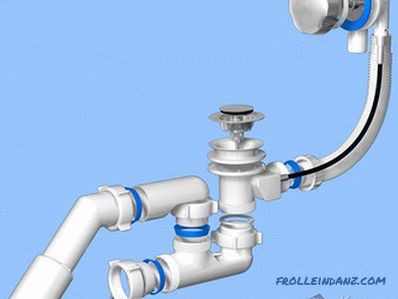 Siphon device
Siphon device
There are several types of siphons that differ in the material from which they are made. Plastic siphons are more popular. To properly perform their installation, it is important to understand their device. The siphon kit looks like this:
- Drain plug. In some cases, its production is made of rubber or plastic. The top of the tube is covered with stainless steel. Some siphon kits may have a chain that is attached to the overflow and to the cork. Thanks to her, you will be able to lift the cork without putting your hands in the dirty water.
- Metal overflow and drain grating. Thanks to this element, no object will fall into the sink. In expensive models of siphons, this element is made of stainless steel, and in cheap ones - of plastic.
- Rubber gasket. The color of the gasket, which is installed on the reverse side, does not matter. It prevents water from entering between the outlet and the bathtub drain.
- Outlet outlet. Used to drain water.
- Exhaust nut. It is made of both plastic and metal.
- Removable knee. It is necessary to clean the siphon from possible blockages. Thanks to the removable knee, you can clean without complete disassembly.
- Cone gaskets.
- Tightening nuts.
- Sewer disposal.
- Tap for overflow.
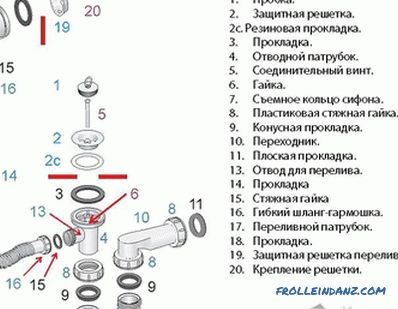 Mechanical system
Mechanical system
Some siphons are equipped with automatic systems for opening the drain hole. Three types of siphons can be found:
- Mechanical system. It uses a simple rubber or plastic stopper. Drain the water by hand. The system is simple and at the same time reliable.
- Semi-automatic system. The drain mechanism is controlled by a special cable / lever element. This mechanism is set above the water level, which is usually typed in the bath.
- Automatic system. Siphon in this case with the filling equipment is combined into one design. Management is carried out thanks to the built-in / remote microprocessor.
 Automatic system
Automatic system
Connection technology
The siphon installation technology is very is simple. If you follow the manufacturer's instructions, then you will be able to do everything yourself.
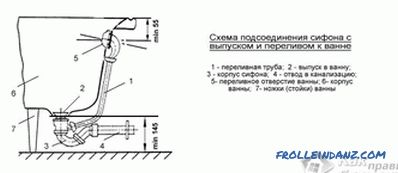 The installation scheme of the siphon
The installation scheme of the siphon
Step by Step Instruction:
- If you It is necessary to replace the old siphon, then after its dismantling, the junction of the siphon should be well cleaned.
- After that, a gasket is inserted into the lower overflow and is attached to the lower drain hole.In parallel, the other hand attaches the top plate and is screwed to the drain hole. Holding the bottom, tighten the screw on top. When tightening the screw, it is important not to overdo it. If the case is plastic, then it can easily burst.
- By the same principle, the upper overflow is established.
- Now the overflow with the drain is connected to the corrugated hose. If the hose is longer than intended, do not cut it. Just give it a smooth shape. If a nut is used in your siphon model for sealing, then install with a thin end to the overflow pipe and drain. On the corrugation, first put the nut on, and after the rubber seal.
- Next, a water seal is connected. A cap nut with a tapered or flat gasket is used for the connection.
- To connect the siphon, connect the nozzle to the water trap.
- At this stage, the siphon is connected to the sewer system. Depending on the diameter of the nozzle, you may need a rubber cuff.
- At the very end, you should check all the work for leaks. With a good assembly of the neck water will not leak. After that, flush the bathtub and also check the entire assembly for tightness.
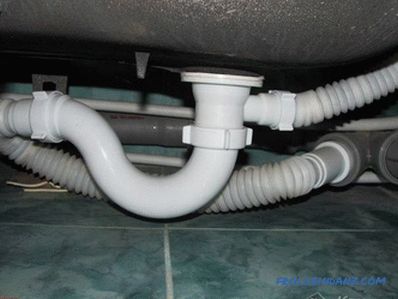 Check for tightness
Check for tightness
Leaks can occur for two reasons: bad tightened the nut or when the connection formed a bias.
Tips and Tricks
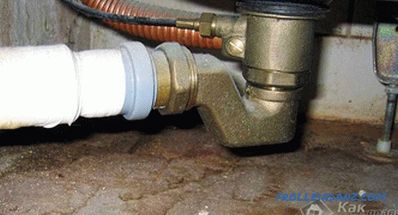 Carefully install the gaskets
Carefully install the gaskets
- Siphon assembly is best to start after studying the attached instructions.
- If there are rough edges in the drain or overflow holes, they should be sanded.
- Displacements are not allowed. In some cases, you have to use silicone sealant.
- It is necessary to control the height difference between the drain and the drain into the sewer.
- The slope of the pipe must be at least 1 cm per 1 m.
So, apparently, you do not need to be an expert to understand the connection of the bath to the sewage system. Before you connect the bath, consider each step of the work. If you already have experience in this work, be sure to write about it in the comments.
Video
See also:
Routing the pipes in the bathroom with your own hands
How to make a pipe box in the bathroom
How to install an acrylic bath
